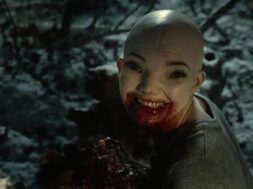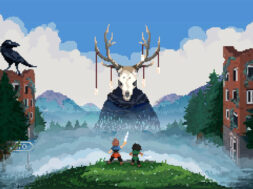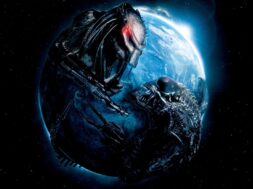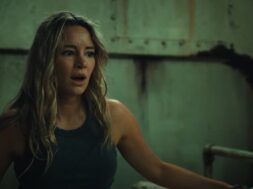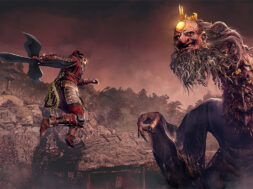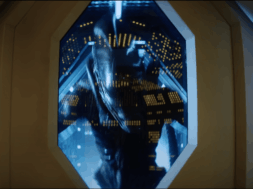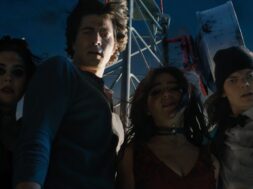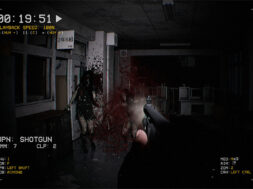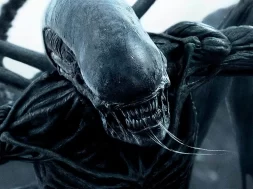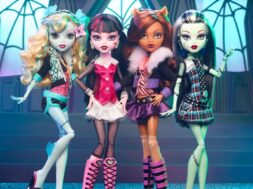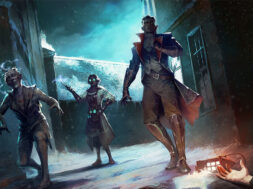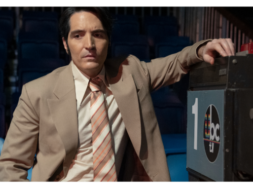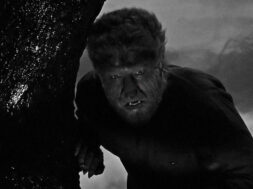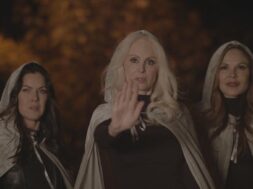
Last Updated on September 9, 2024 by Angel Melanson
As much as I love horror, it’s rare that I’m truly horrified by the images they provide. A well-crafted jump scare might produce the desired little “Gah!” or I might tense up at the requisite chase scenes, but those repulsed, “I can’t even look at this” sort of moments are few and far between.
Splice is one of the few exceptions that come to mind. And no, it’s not the part where Adrien Brody becomes the first man to have sex with a genetic hybrid (though that’s icky too). It’s earlier, when his character Clive and Sarah Polley’s Elsa are unveiling their earlier experiment, a pair of completely genetically engineered little Cronenberg-y looking things they’ve named Fred and Ginger.
If you’ve seen the movie, you know the part. Within seconds of presenting their creation to a room full of potential investors for their research, Fred and Ginger turn on each other and begin viciously stabbing each other with their sharp tails. The fight gets very bloody and eventually smashes through their glass case, covering our heroes and all those would-be check-writers with blood and shattered glass. It’s a scene so shockingly chaotic that the first time I watched the movie, I thought it was a dream sequence.
That classic sequence is one of the many moments in the movie that are given a little bit of extra context in Claire Donner’s new novelization of the film, out now from Encyclopocalypse Publications. Unlike the Stop the Killer series of novels (My Bloody Valentine, Silent Night, Deadly Night, etc.) Donner does not invent new scenes and characters to bulk up the existing film.
Indeed, Splice is a very intimate story, with only six speaking roles, including Dren, and it would be strange for Donner to invent a new character or two just to pad things out somewhat. I don’t have the film memorized or anything, but across its 191 pages, the novel never once presented a scene that felt entirely new for me.

Of course, that is to be expected with a new novelization of an older film; it wouldn’t make sense to have a different ending or changed characters the way tie-ins of yesteryear often do. But Donner doesn’t just transcribe the movie, either; the real draw of the book is how she extrapolates backstories and character thoughts from what’s actually on-screen. These additions do not contradict anything in the on-screen story, but they do enhance a number of its events.
A perfect example would be a scene later in the film when Clive and Elsa decide to hide Dren at the latter’s family home. In one of the movie’s most gutting moments, Elsa opens the door to a room that looks more like a prison cell: it’s basically just a mattress on the floor and a steel pot. “I thought you said your mom left it just the way it was [when you lived here]?” a puzzled Clive asks. “She did,” Elsa replies.
This is really all the movie offers in terms of explaining that Elsa didn’t have the happiest childhood and that her mom had no maternal instincts (a trait she passed on to Elsa, unfortunately). But in her book (which carries an intro from co-writer/director Vincenzo Natali, so one could consider it a stamp of approval), Donner provides us with Elsa’s train of thought, allowing us to learn exactly what kind of woman her mother was.
It turns out she believed Elsa’s (and her own) only purpose in life was to serve the family farm, and thus, anything else—even as much as a doll to play with—was unnecessary. The few toys Elsa had were scrounged from elsewhere and kept hidden from her mother (a detail that helps explain Elsa’s reaction to discovering Dren had a pet cat), and there was zero affection coming her way.
Similarly, in the movie, they just throw in the “We have a family farm” bit to explain how they have somewhere to take Dren without any further clarification. Here, we learn that Elsa inherited it when her mother died. After using the money to pay off the staff to close the farm, she never bothered to sell the property because it was too much effort to deal with anything related to her family.
These kinds of character details, offered throughout the book, make it a must-read for fans of the movie, even with its lack of cut content (i.e., scenes Natali scripted but never shot). Yes, the scene-for-scene run-through of the story is identical to that of the film, but every page lets us inside the characters’ heads (even Dren’s) in ways that explain how their pasts inform their present-day decisions.
Yes, even that much-hated scene where Clive gives in to Dren’s advances. As we learn in the movie, she shares DNA with his girlfriend, so it makes sense he’d find something alluring about her. But the book goes into what drew him to Elsa in the first place, a fierce independence and shared curiosity to discover things that she herself has been neglecting.
And we know a little more about their love life; when they have sex on their couch (and are seen by Dren) in the movie, they note it had been a while, but both characters reflect on the lack of spontaneity and passion in their lovemaking, with Elsa insisting on not only a condom for him but also spermicide, diaphragm, and sponge for her. The prep work involved essentially kills all of the excitement.

Basically, in that moment, he’s seeing more of the woman he fell in love with in Dren than he has seen in Elsa lately, making it hard for him to reject her advances. So even if it’s still morally questionable at best, there’s at least a little bit of humanizing his decision.
In contrast, the movie has to settle for an audience thinking, “Dudes really will just stick it into anything, huh?” I don’t know if it will change the minds of anyone who turned on the movie entirely at that moment, but for those of us who went along with it, it’s nice to get a take (from a female author, no less) that understands and explores the gray area.
In addition to Natali’s aforementioned intro, in which he describes the lengthy process for the film to get made (this was a script he wrote immediately following Cube’s release), fans can enjoy a few pages of sketches and character models. Having these bonuses is something that really makes these “new novelizations of old movies” releases stand out as more than a weird gimmick.
Sure, they could give it vintage-looking art and try to pass it off as something that would have been published in whatever year the movie came out (2010 in this case), but by adding the director’s own thoughts on the process and some development info – i.e., things you would never see in a traditional novelization – you’re getting a release that EMBRACES the fact that it’s for a movie that’s been around for a while. And that is certainly a better way to honor a new classic than slapping an ugly slipcover on the Blu-ray and dumping it on the shelf at Walmart. Keep ’em coming!

For more, read our interview with Splice author Claire Donner, and check out our from the screen to the page collection of movie novelizations. Get your copy of Splice from Encyclopocalypse.
